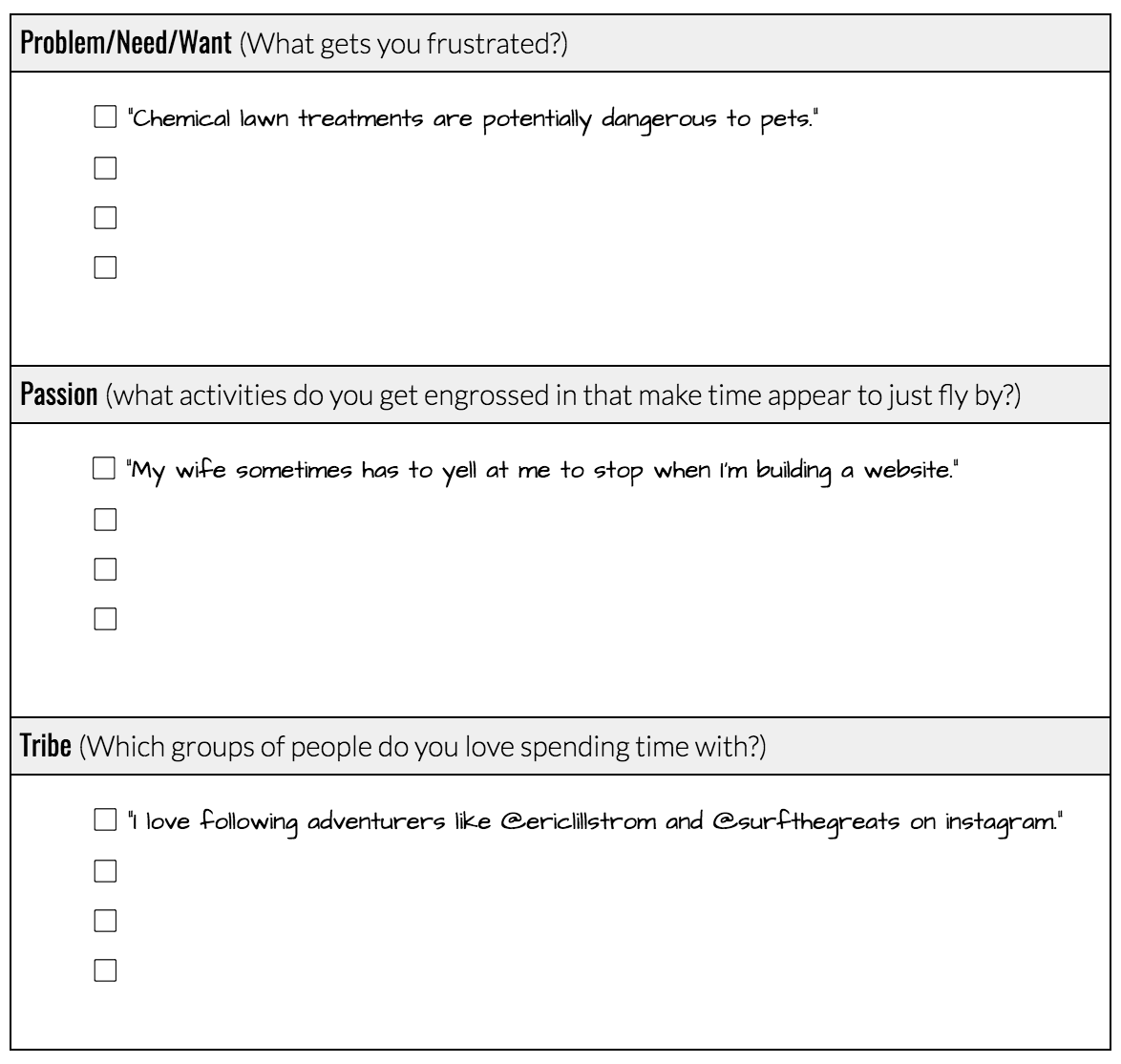Problems, Passions, and Tribes
Problems
The incubator curriculum is exactly correct in that startup businesses should seek problems to solve. If the pain point is severe enough, others will pay to have that problem solved. The problem I’ve found, however, is that students often have a hard time identifying ANY problems let alone problems worth building a business around. One easy solution here, is to have your students start identifying problems, needs, and wants on day one or even before the term begins. Students need time and practice to strengthen the metacognitive process of realizing opportunity when faced with frustration or adversity.
Time never seems to be in abundance when it comes to this class however. The “Problem/Wants/Needs” prompt alone will generally only yield the following: tangled headphones, warm pillows, and slow lunch lines.
Passions
In addition to adding time to practice identifying problems, I ask my students to think about the areas in life that they are most passionate about. This could be a sport, hobby, extra curricular activity, collection, musical instrument, movie genre, or small-batch artisanal spaghetti art. The point is, it doesn’t matter what the passion is, so long as the passion is strong. Building a business is hard, when students choose an idea based on market opportunity over passion, that idea tends to fizzle over time (sometimes in just a very short time). If your students are going to build a business, they might as well love the industry!
More importantly, when a student is truly passionate about something, they will understand that topic better than most and be better equipped to find a problem worth solving. Sometimes the “business topic” comes first, and then it’s up to the students to engage in a “problem finding mission.” This can be accomplished via reflection, and by going on an “excursion” – a practice employed by the product design firm IDEO.
In short, an excursion is a short field trip to a place relevant to the students’ business topic. Excursions should be done on the students’ own time and can be assigned as homework (preferably over a weekend). On the excursion, students should plan to observe and interview others to better understand their space.
Tribes
Another approach to idea generation is to have your students consider the “Tribes” or groups of people they gravitate towards. Who do they follow on instagram? Who do they find themselves watching on YouTube? What micro-demographics do they find themselves apart of? Another way to think about this is which group of people would your students be most happy serving? As with identifying something they’re passionate about, they’ll be less likely to lose motivation building their business if their business directly impacts the people they care most about.
Summary
The idea generation phase of this curriculum is incredibly important. Teams with strong, actionable ideas tend to engage more, work harder, and contribute better to class discussion. While Lean Methodology is fundamentally designed to help vet business ideas, the first time business builders in your class may benefit from considering the ideation process with this framework in mind.
Resources
Linked below is the ideation worksheet that I hand out to my students on day one that walks them through the Problems, Passions, and Tribes framework. Please incorporate it into your class if you think it might be useful.


0 Comments